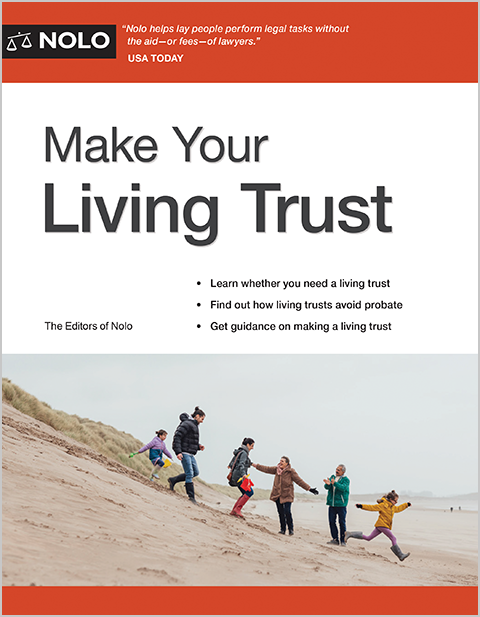One of your first jobs as trustee is to let beneficiaries know you're in charge.
If you find yourself serving as the successor trustee of a living trust, one of your key jobs will be dealing with the trust beneficiaries. After all, you're managing their money for them. And you have a legal (fiduciary) duty to keep them informed about how you're managing the trust assets. The beneficiaries need reliable information, or they won't be able to protect their interests.
Your responsibilities to the beneficiaries start almost immediately. Doing a good job with the first step—letting beneficiaries know that you're in charge of the trust now that the person who created the trust (the settlor) has died—will make your job easier down the road.
Sending Beneficiaries the First Notice
When you take over as successor trustee of the trust, you need to let the beneficiaries know that you're now in charge. Some states require specific language; in others, a simple letter in your own words will do. You will need to explain the situation, which usually includes these basic facts:
- The living trust has become irrevocable because of the settlor's death. (The settlor, while alive, could have changed the terms of the trust at any time; now, they are set in stone.)
- You're now in charge of the trust assets.
- You will distribute the trust assets to the beneficiaries as soon as you can.
Be realistic with the beneficiaries about when they can expect to receive money from the trust. Unless they've inherited before, they probably have no idea that it will be a while before you're ready to distribute assets from the trust. Explain that first, you've got to inventory trust assets and also determine what debts and taxes need to be paid. That process might take only a few weeks, or it could take a few months. See Nolo's resources on living trust administration for more information.
State Notice Requirements
Nearly every state has specific rules about how you must notify beneficiaries about the trust and what information you must provide.
When to Send the Notice to Trust Beneficiaries
Several states require you to send a notice to all trust beneficiaries within a certain time after you take over as successor trustee of the trust. Most states give you 30 or 60 days to send this initial notice. Others might require notice within "a reasonable time."
Other Notice Requirements
Even if your state doesn't have specific rules or laws about notifying trust beneficiaries of the trust's existence, your state might have other notice requirements. For instance, some states require notice of certain transactions and court proceedings. If the trust document or state law is unclear about when to give notice, you might want to consider speaking with an attorney.
Who Must Receive Notice About the Trust?
Some states require that the deceased settlor's legal heirs—that is, people who would have inherited under state law if the person didn't leave a valid will or trust—receive a notice about the trust. Some states require that notices be sent to everyone who is a "qualified beneficiary." These beneficiaries are, basically, anyone who might be entitled to get money from the trust—that is, any beneficiary named in the trust, even as an alternate or contingent beneficiary. The qualified beneficiary category includes people:
- who could receive trust assets now
- who would inherit from the trust if the current trust beneficiaries died, and
- who would receive trust assets if the trust ended now.
How Should You Notify a Trust Beneficiary About the Trust?
The notice you send isn't a fancy legal form; you can just write a letter, as long as it includes all the necessary information (and satisfies your state's rules about content and format, if any). Here are the essentials, in most states:
Explain that the trust exists. Some beneficiaries might be aware that the settlor made a trust, but others might not know.
Provide your name and contact information. Beneficiaries need to know how to get in touch with you.
Tell beneficiaries that they have the right to see a copy of the trust document and that you will send them one if they request it. You can go ahead and include a copy of the trust with your letter, but you don't have to unless they ask for it.
Give the deadline for court challenges. It's rare for a beneficiary to go to court and challenge the validity of a trust, but it happens. Your notice should tell beneficiaries that if they want to contest the trust in court (for example, because they think the settlor wasn't of sound mind when making the trust), they must do it by a certain time.
Supply whatever other information your state requires. If your state requires notice, make sure you understand its rules about exactly what the notice must contain. (Your state might even dictate how big the font must be.) To avoid problems, follow these rules meticulously. If you don't understand what's required, talk to a local lawyer who has helped other successor trustees administer living trusts.
The Trustee Has a Duty to Keep Beneficiaries Informed
After you give the first notice to beneficiaries, you're not off the hook. As the trustee, you have a legal duty to keep the beneficiaries informed about how you're managing trust assets. You need to fulfill your responsibility to keep beneficiaries informed as long as you're trustee. Failing to keep them informed could result in legal consequences, including a court removing you as trustee.
Ready to create your will?



